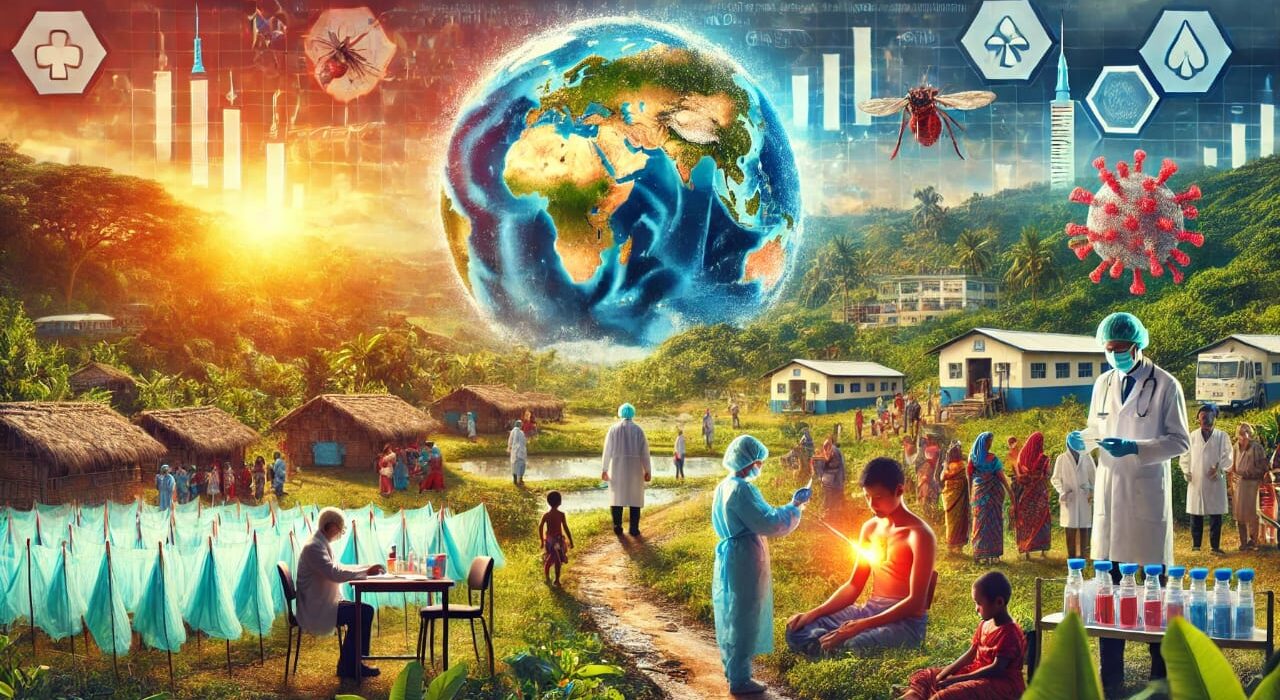Global Efforts in Combating Infectious Diseases: A Beacon of Hope
Infectious diseases have long been one of humanity’s greatest challenges, affecting millions of people worldwide, especially in low- and middle-income countries. However, over the past few decades, remarkable progress has been made in the fight against these diseases. Thanks to coordinated global efforts, innovative technologies, and significant investments in public health, the world has seen substantial improvements in the prevention, treatment, and control of infectious diseases. These achievements represent a beacon of hope in the ongoing battle to ensure better health for all.
1. The Power of Vaccination
Vaccination remains one of the most effective tools in preventing infectious diseases. The global push for immunization has led to the near-eradication of diseases such as polio, which once paralyzed hundreds of thousands of children each year. Through the Global Polio Eradication Initiative (GPEI), polio cases have decreased by over 99% since 1988, with only a few countries still reporting cases.
The success of vaccines extends beyond polio. The introduction of the pneumococcal and rotavirus vaccines has significantly reduced the incidence of pneumonia and diarrhea, two of the leading causes of death in children under five. The recent development and distribution of COVID-19 vaccines also demonstrate the power of global cooperation in addressing emerging infectious threats.
2. Tackling HIV/AIDS
The fight against HIV/AIDS has been one of the most significant global health efforts in history. Since the epidemic began, over 75 million people have been infected with the virus, and more than 32 million have died. However, global initiatives like UNAIDS and the President’s Emergency Plan for AIDS Relief (PEPFAR) have transformed the landscape of HIV treatment and prevention.
Today, over 28 million people are receiving antiretroviral therapy (ART), which not only saves lives but also reduces the transmission of HIV. Prevention strategies, including education, condom distribution, and pre-exposure prophylaxis (PrEP), have further curbed the spread of the virus. The ultimate goal of ending the AIDS epidemic as a public health threat by 2030 is within reach, thanks to sustained international efforts.
3. The Battle Against Malaria
Malaria, a disease that claims hundreds of thousands of lives each year, particularly in sub-Saharan Africa, has seen significant declines in mortality and morbidity rates. The widespread distribution of insecticide-treated bed nets, indoor residual spraying, and the development of effective antimalarial drugs have played crucial roles in this progress.
The World Health Organization (WHO) and partners have set ambitious goals to eliminate malaria in several countries by 2030. The recent approval of the RTS,S/AS01 malaria vaccine marks a historic milestone, offering hope for a significant reduction in malaria cases and deaths, particularly among children.
4. Tuberculosis Control
Tuberculosis (TB) remains one of the top 10 causes of death worldwide, particularly in low-income countries. However, global efforts have led to a steady decline in TB incidence and mortality. The WHO’s End TB Strategy aims to reduce TB deaths by 95% and cut new cases by 90% between 2015 and 2035.
Innovations in diagnostics, such as the GeneXpert test, have improved the rapid detection of TB and drug-resistant strains. Additionally, the development of shorter, more effective treatment regimens is helping to combat TB more efficiently, reducing the burden of the disease on affected populations.
5. The Global Response to Emerging Infectious Diseases
The COVID-19 pandemic underscored the importance of global preparedness and response to emerging infectious diseases. The rapid development and deployment of vaccines, diagnostics, and treatments were made possible through unprecedented global collaboration. Initiatives like the Access to COVID-19 Tools (ACT) Accelerator and COVAX facility have worked to ensure equitable access to these life-saving tools, particularly in low-income countries.
This experience has highlighted the need for continued investment in global health security, including surveillance systems, research and development, and the strengthening of health systems worldwide. The lessons learned from the COVID-19 response are being applied to better prepare for future pandemics and other emerging health threats.
Conclusion
The global efforts against infectious diseases are a testament to what can be achieved when nations, organizations, and individuals come together with a common goal. While significant challenges remain, the progress made in reducing the burden of diseases like HIV/AIDS, malaria, tuberculosis, and others is undeniable. Continued investment in research, innovation, and global collaboration is essential to sustain these gains and to protect future generations from the threat of infectious diseases.
The fight is far from over, but the strides made thus far provide a hopeful glimpse into a future where these diseases no longer pose a significant threat to human health. With sustained effort and international cooperation, a healthier, more resilient world is within our grasp.

